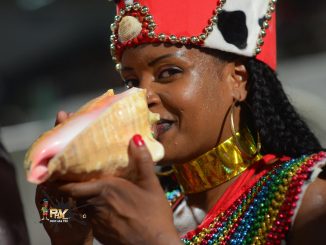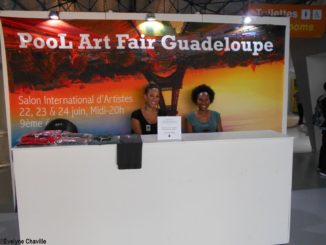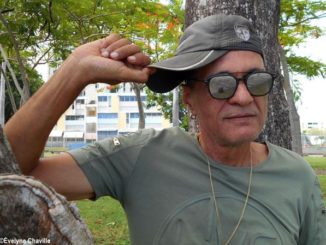
From November 7 to 22, Valérie Marteel presents to the audience the second cycle of the exhibition “Les Féeries de Lilie” at the Rémy Nainsouta Cultural Centre in Pointe-à-Pitre (Guadeloupe). This series is composed of twenty paintings made from fourteen themes. Women are the central characters of this pictorial work.
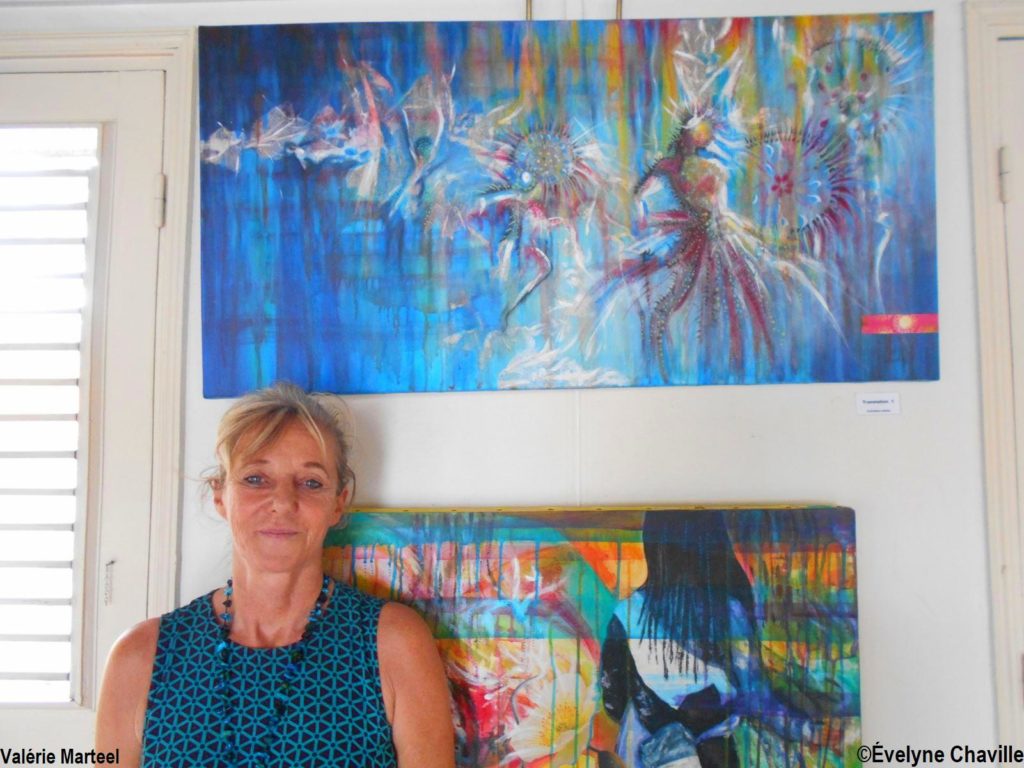
Valérie Marteel, who is from Besançon in Franche-Comté, arrived in Guadeloupe thirty years ago. She had come to work as a psychomotor therapist for six months, but she fell in love with the island, she got married here and did not go back to France.
Although she was attracted to drawing and painting since she was young, she learned to paint more than twenty years ago in Guadeloupe. “I took painting lessons with an outstanding artist, Catherine Plugiesi-Conti. She taught me a lot of techniques“, she says. The artist sees herself more as a visual artist, she likes to add various materials to her works, so for this exhibition, “Les Féeries de Lilie”, she used tissue paper and coconut fibres.
About the title of her exhibition, the artist explains: “Lilie is my nickname. My paintings show that we are in the dream and between two worlds. The characters represented are not completely real. It is an imaginary world that tells a story of transformation which begins with chaos, which escapes us and takes us elsewhere”.
Women with delicate features have the leading role in this pictorial work and the artist explains: “I wanted these characters to be women but beings between women and fairies; the fairy comes from another world, it comes to transform and reborn (…) This is not the story of only one woman, each painting shows a different evolution with a different woman”.
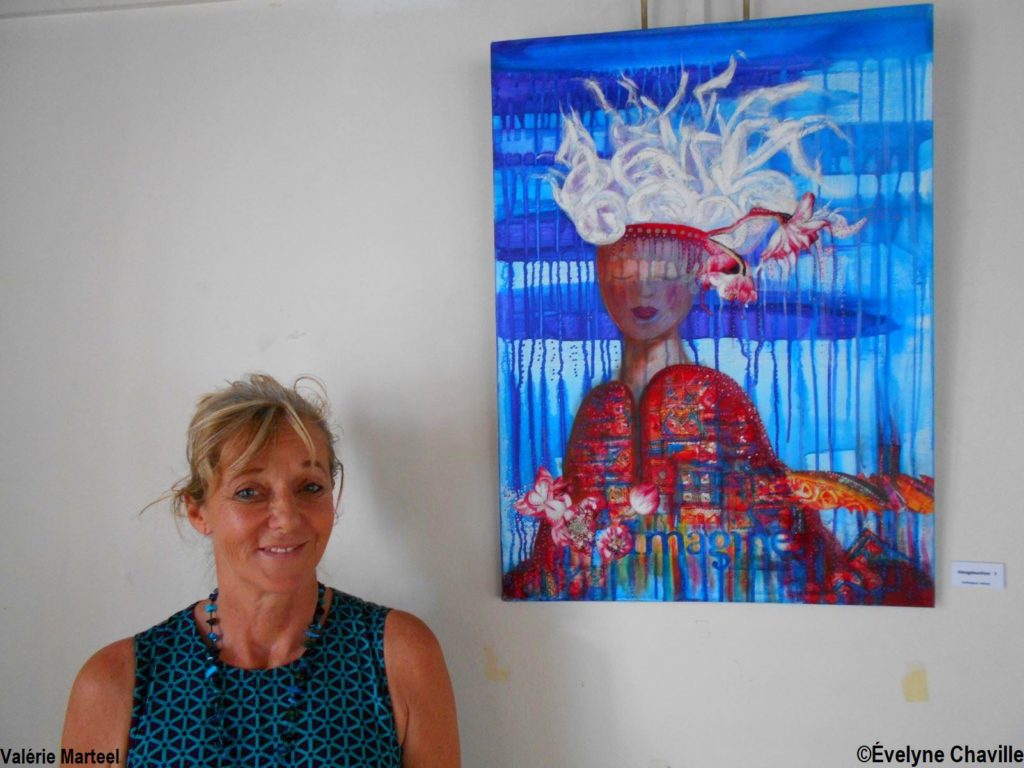
20 works from 14 themes
Valérie Marteel – who attended a training of art therapist – built this series of twenty works according to fourteen themes and at a deliberate pace. She advises visitors to follow a given direction to understand what she wanted to express. It should be noted that the very first painting made by the artist which inspired her for all the others is titled “Translation 1”, several months were necessary to its achievement. In addition, a few paintings for this exhibition in the Édouard Chartol Room at the Rémy Nainsouta Cultural Centre were already displayed at the Maison du Patrimoine in Basse-Terre, last February.
This second cycle begins with two paintings entitled “Chaos” where everything explodes; “Translation” is the name of the other two paintings because “they threw us elsewhere without wanting it, we feel insecure“, she says; “after this upheaval, comes the phase of “Réflexion” and we suffer from depression which is a moment not necessarily negative but a moment when we sit down, where we have time to think”, she explains; “Rêve” is the name of the following painting “where we express our imagination to start building something else”; this is obvious, the visitor arrives in front of a painting called “Imagination” because “it opens the doors”, says the artist; then it’s the “Don” because after dreaming and imagining, we have to share with others, we must give to receive”, she says, and she continues: “this gift goes well with “Douceur” (which is the next painting), it’s a state of mind”, she says. The visitor then discovers “Légèreté” and the artist says: “it’s the letting go, we have to take advantage of the mischievous sides of life, to take stock”; because of this lightness you want to “Danser” and the visual artist says: “life is dance, we are in action, we take possession of our body”; the next painting that awaits the visitor is called “Liberté” because “we decide to recognize what we really are and accept ourselves”, she thinks; comes “Évanescence” which is “the character who is becoming fluid to become allies to the rest of the world”, says the artist; then “S’aimer” because it’s the time of “self-love”, she notices; “Et S’aimer” is the penultimate work of this exhibition since we have “to love the others, to plant seeds”, says the visual artist; the visitor arrives at the end of the trip with the painting entitled “Renaissance” because “it’s time to live other experiences”, says Valérie Marteel.
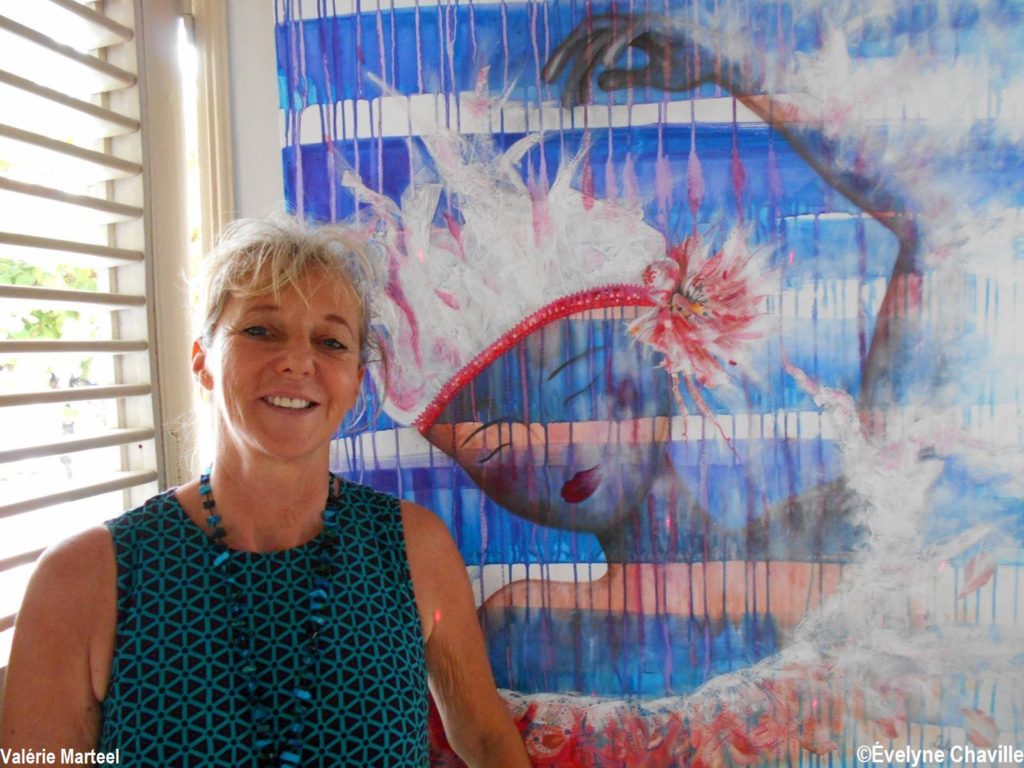
A communicative sensitivity
Blue is the dominant colour in “Les Féeries de Lilie”. About this choice, the painter says: “it is a colour which has infinite shades, it is the colour of harmony and peace”. With this acrylic paint, she used as techniques, for the first time, “coulure” and collage. “With art, we always do a work on ourselves, the medium works for us. When I start a painting, it’s the medium that drives me. I think a lot before painting, I carry out research, I cut the materials that I will add in the work. During these long school holidays, I went to Paray-le-Monial, in Burgundy, I visited a beautiful exhibition of mosaics, some details inspired me for the shaded tones and colours”, explains Valérie Marteel.
The sensitivity of the artist touches some visitors, she remembers this woman who visited the exhibition for nearly an hour and fell into her arms in tears… However, the person who best understood Valérie Marteel’s work is without a doubt her son Théo who is very attached to Guadeloupe, the land where he was born 23 years ago, and who is now an art student in France. He writes in his appreciation: “Allegory of the woman or dreamlike portraits of this essential being, “crucial“ according to Aragon, the pictorial world of Lilie invites us to shake up the way we look at them. If you let yourself be fascinated by the accuracy of details, once it is done, you will able to appreciate how harmonious they come together (…)”
In addition to painting, the psychomotor therapist has other artistic passions, such as theatre she discovered fifteen years ago, by taking lessons with Guadeloupean actress Isabelle Kancel and writing. Indeed, her illustrated album for children titled “Les incroyables lunettes de Toinette” will be published, soon, by Éditions PBL. The artist has a lot of projects. She also created with two psychomotor therapists, art therapists and visual artists the Espace de recherche caribéen en Art Thérapie (ERCAT), an association dedicated to the organization of art therapy workshops with, like activities, painting, writing and theatre.



























